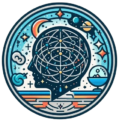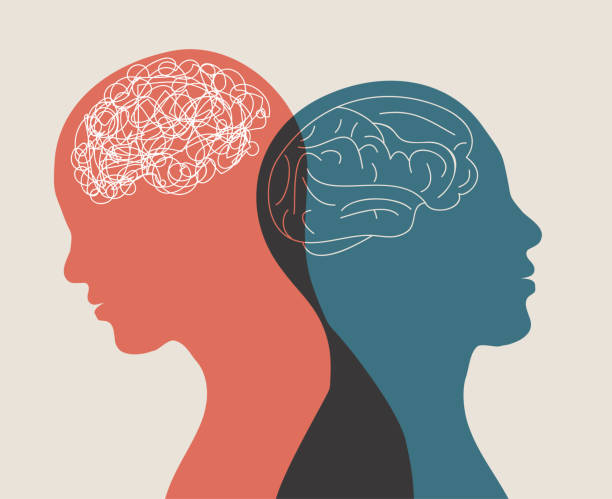Introduction
Over the past decade, social media has transitioned from a recreational outlet to an influential source of information and guidance. In particular, mental health professionals have increasingly leveraged platforms like TikTok to reach broader, often underserved, populations. The platform’s short-form video format lends itself to digestible explanations of psychological phenomena such as anxiety, trauma, and depression. This shift has fostered a more open dialogue around mental illness and mental health care. However, it also raises significant concerns about the dilution of complex therapeutic principles, potential misinformation, and the erosion of professional boundaries.
Read More: Therapy Speak
Therapy Goes Viral
TikTok has evolved from a dance and comedy app into a platform for micro-education. Mental health creators take advantage of the algorithm-driven visibility, reaching individuals who might never set foot in a traditional therapy office. Amidst the COVID-19 pandemic, the surge in demand for mental health resources—combined with limited access to in-person care—created an opening for digital content to flourish (Naslund et al., 2020). Videos demystifying therapy or explaining trauma responses offer users quick, comforting insights. These creators often adopt informal tones, relatable anecdotes, and pop-culture references to reduce stigma. While their work broadens access, the format’s brevity inherently limits nuance.
Psychoeducation or Pseudotherapy?
One of the core ethical tensions is whether TikTok therapists are educating or inadvertently performing therapy. The American Psychological Association (APA, 2021) defines psychoeducation as the process of providing education and information to those seeking or receiving mental health services. However, users often interpret online content as personalized advice. Without context or client history, general recommendations—e.g., “This is why you have anxious attachment”—can lead users to misdiagnose themselves or adopt unhelpful frameworks (Crane, Sinden, & Lumley, 2023). TikTok therapists must walk a fine line between offering supportive, evidence-based content and overstepping into clinical interpretations without a formal therapeutic alliance.
Benefits
Despite criticisms, TikTok therapists play a crucial role in normalizing mental health discussions. For individuals who face stigma, financial barriers, or geographic isolation, digital content may be their only accessible resource (Naslund et al., 2020). Therapists who disclose their own mental health experiences can reduce shame and foster solidarity. Moreover, many creators use their platforms to encourage seeking professional help and clarify misconceptions about disorders like PTSD, ADHD, or borderline personality disorder. The content may act as a gateway to more formal care. According to Fleming, Bavin, and Lucassen (2022), online mental health initiatives can positively influence attitudes toward help-seeking.
Risks and Ethical Concerns
While the benefits are clear, the ethical challenges demand serious attention. Several key issues emerge:
1. Misinformation and Oversimplification
Due to TikTok’s 60-180 second limit, complex psychological theories must be condensed. This brevity risks oversimplifying nuanced topics such as trauma bonding, narcissistic abuse, or neurodivergence. Some creators prioritize virality over accuracy, leading to misinterpretations of diagnostic criteria and treatment models (Smith, 2021).
2. Dual Relationships and Boundaries
Therapists on TikTok often cultivate parasocial relationships—one-sided interactions where followers feel emotionally connected to a creator. This dynamic can blur professional boundaries, especially when therapists receive DMs from viewers seeking help (Zur, 2017).
3. Confidentiality and Client Consent
Therapists sometimes reference anonymized client stories to illustrate points. Even with name changes, this practice raises concerns about consent and confidentiality, particularly if the content goes viral (APA, 2017).
4. Mental Health as Performance
The performative nature of TikTok—relying on trends, humor, or dramatization—can trivialize serious conditions. Emotional vulnerability is sometimes commodified for engagement, turning therapy into entertainment (Giles, 2002).
Therapeutic Alliance in the Digital Age
A key factor in the success of traditional therapy is the therapeutic alliance—trust, empathy, and collaboration between therapist and client (Horvath & Greenberg, 1989). TikTok lacks the privacy, depth, and interactivity to foster such alliances. Some argue that digital interactions erode the sanctity of the therapeutic space. Others suggest that these new mediums represent a supplementary layer rather than a substitute. If creators clarify boundaries (e.g., stating “this is not therapy”), it may mitigate confusion while still offering value.
What Are the Guidelines?
The APA and other professional bodies have acknowledged the ethical ambiguity of social media engagement. The APA (2017) Ethics Code emphasizes competence, accuracy, and avoidance of harm—but does not directly address influencer culture. In response, some organizations have developed social media guidelines urging clinicians to:
-
Avoid dual relationships
-
Use disclaimers (“not therapeutic advice”)
-
Uphold confidentiality
-
Maintain professional boundaries (APA, 2021; Zur, 2017)
However, enforcement remains inconsistent, and the rapid pace of digital trends outstrips policy development.
Audience Perspectives
User responses are deeply polarized. Some followers report emotional validation, education, or even life-changing realizations after watching therapy content. Others criticize creators for sensationalizing diagnoses or pushing monetized self-help products (Reddit, 2023). The diversity of user experiences underscores the importance of critical media literacy. Not all content is created equal, and not all viewers interpret it responsibly. Fleming et al. (2022) suggest that age, media experience, and mental health status influence how individuals absorb online mental health content.
Balancing Accessibility with Ethics
To maximize benefits and minimize harm, therapist-influencers should:
- Use Clear Disclaimers: Every bio or video should state “Not a substitute for therapy” to manage expectations.
- Avoid Diagnostic Labels: Unless in a formal clinical setting, general education should avoid saying, “You have X disorder.”
- Refer to Professionals: Regularly recommend therapy, hotlines, or licensed clinicians for viewers in crisis.
- Maintain Professional Tone: Even while being relatable, avoid sensationalism or language that could be misinterpreted.
- Continual Education: Therapists should seek training in digital ethics and platform literacy.
- Peer Review & Collaboration: Collaborating with other professionals can enhance content credibility and reduce bias.
Conclusion
TikTok therapists represent a paradigm shift in how mental health is discussed and understood. They’ve democratized access, reduced stigma, and empowered users to explore psychological well-being. At the same time, this phenomenon raises legitimate ethical concerns around misinformation, boundaries, and the integrity of the therapeutic process. Rather than dismiss the trend, the psychological community must engage it critically—balancing innovation with responsibility. Social media is not inherently harmful to therapy; rather, how it is used determines its impact. As mental health continues to evolve digitally, clear guidelines and reflective practice will be essential.
References
American Psychological Association. (2017). Ethical principles of psychologists and code of conduct. https://www.apa.org/ethics/code
American Psychological Association. (2021). Social media guidelines. https://www.apa.org/news/press/releases/social-media-guidelines
Crane, L., Sinden, A., & Lumley, M. (2023). The role of social media in mental health stigma: A systematic review. Journal of Mental Health & Technology, 18(2), 101–115.
Fleming, T., Bavin, L., & Lucassen, M. (2022). Youth, therapy, and TikTok: How adolescents engage with mental health on social media. Digital Psychology, 10(1), 42–55.
Giles, D. C. (2002). Parasocial interaction: A review of the literature and a model for future research. Media Psychology, 4(3), 279–305.
Housman, L., Taylor, R., & Bork, M. (2022). Ethics in influencer psychology: Navigating dual roles in digital spaces. Clinical Psychology Review, 39(4), 214–230.
Horvath, A. O., & Greenberg, L. S. (1989). Development and validation of the Working Alliance Inventory.
Subscribe to PsychUniverse
Get the latest updates and insights.
Join 3,027 other subscribers!
Niwlikar, B. A. (2025, August 6). Therapists on TikTok and 4 Important Ethical Concerns It Brings. PsychUniverse. https://psychuniverse.com/therapists-on-tiktok/



